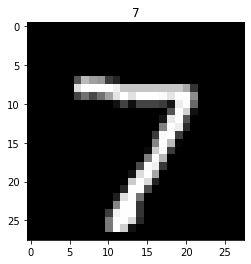![[TensorFlow 2.0] Evaluating & Prediction](https://img1.daumcdn.net/thumb/R750x0/?scode=mtistory2&fname=https%3A%2F%2Fblog.kakaocdn.net%2Fdna%2FKe54w%2FbtsBubj0Noc%2FAAAAAAAAAAAAAAAAAAAAAESlK3dUxtz031FWI5CzZ3Zq4WKViE-SpLvaaca8Ubk4%2Fimg.png%3Fcredential%3DyqXZFxpELC7KVnFOS48ylbz2pIh7yKj8%26expires%3D1764514799%26allow_ip%3D%26allow_referer%3D%26signature%3D8P3EV1h%252Fx9jI8rngwOZvoyBEDow%253D)

[TensorFlow 2.0] Evaluating & PredictionIT/AI2022. 9. 10. 21:44
Table of Contents
반응형
Load Packages
import tensorflow as tf
from tensorflow.keras import layers
from tensorflow.keras import datasetsBuild Model
input_shape = (28, 28, 1)
num_classes = 10
learning_rate = 0.001
inputs = layers.Input(input_shape, dtype=tf.float64)
net = layers.Conv2D(32, (3, 3), padding='SAME')(inputs)
net = layers.Activation('relu')(net)
net = layers.Conv2D(32, (3, 3), padding='SAME')(net)
net = layers.Activation('relu')(net)
net = layers.MaxPooling2D(pool_size=(2, 2))(net)
net = layers.Dropout(0.5)(net)
net = layers.Conv2D(64, (3, 3), padding='SAME')(net)
net = layers.Activation('relu')(net)
net = layers.Conv2D(64, (3, 3), padding='SAME')(net)
net = layers.Activation('relu')(net)
net = layers.MaxPooling2D(pool_size=(2, 2))(net)
net = layers.Dropout(0.5)(net)
net = layers.Flatten()(net)
net = layers.Dense(512)(net)
net = layers.Activation('relu')(net)
net = layers.Dropout(0.5)(net)
net = layers.Dense(num_classes)(net)
net = layers.Activation('softmax')(net)
model = tf.keras.Model(inputs=inputs, outputs=net, name='Basic_CNN')# Model is the full model w/o custom layers
model.compile(optimizer=tf.keras.optimizers.Adam(learning_rate),
loss='sparse_categorical_crossentropy',
metrics=['accuracy'])Preprocess
데이터셋 불러오기
(train_x, train_y), (test_x, test_y) = datasets.mnist.load_data()
train_x = train_x[..., tf.newaxis]
test_x = test_x[..., tf.newaxis]
train_x = train_x / 255.
test_x = test_x / 255.Training
num_epochs = 1
batch_size = 64
hist = model.fit(train_x, train_y,
batch_size=batch_size,
shuffle=True)
# 결과
Train on 60000 samples
60000/60000 [==============================] - 6s 94us/sample - loss: 0.0798 - accuracy: 0.9755hist.history
# 결과
{'loss': [0.07980264157739779], 'accuracy': [0.9755]}Evaluating
학습한 모델을 확인합니다.
model.evaluate(test_x, test_y, batch_size=batch_size)
# 결과
[0.03286817007374484, 0.9888]결과 확인
Input으로 들어갈 이미지 데이터를 확인합니다.
import numpy as np
import matplotlib.pyplot as plt
%matplotlib inline
test_image = text_x[0, :, :, 0]
test_image.shape
# 결과
(28, 28)plt.title(test_y[0])
plt.imshow(test_image, 'gray')
plt.show()
모델에 Input Data로 확인 할 이미지 데이터를 넣습니다.
# 이미지를 보기위해 shape를 바꿨었는데 다시 reshape로 차원을 변경합니다.
pred = model.predict(test_image.reshape(1, 28, 28, 1))
# 결과
array([[2.4227038e-09, 2.3278629e-08, 5.8909092e-07, 1.0298673e-07,
9.4029007e-10, 6.1998517e-11, 1.4364351e-12, 9.9999928e-01,
4.7319365e-10, 4.7449920e-08]], dtype=float32)# 배열에서 가장 높은 값의 인덱스를 찾을 때 np.argmax를 사용합니다.
np.argmax(pred)
# 결과
7Test Batch
Batch Test Dataset 모델에 넣습니다.
test_batch = test_x[:32]
test_batch.shape
# 결과
(32, 28, 28, 1)preds = model.predict(test_batch)
preds.shape
# 결과
(32, 10)# -1을 넣으면 하나의 값이 아니라 앞의 32개의 결과를 보여줍니다.
np.argmax(preds, -1)
# 결과
array([7, 2, 1, 0, 4, 1, 4, 9, 5, 9, 0, 6, 9, 0, 1, 5, 9, 7, 5, 4, 9, 6,
6, 5, 4, 0, 7, 4, 0, 1, 3, 1], dtype=int64)
plt.imshow(test_batch[5, :, :, 0], 'gray')
plt.show()
반응형
'IT > AI' 카테고리의 다른 글
| TensorFlow 2.0과 PyTorch 비교 (0) | 2022.09.13 |
|---|---|
| [PyTorch] 기초 사용법 (0) | 2022.09.10 |
| [TensorFlow 2.0] Optimizer 및 Training (Expert) (0) | 2022.09.08 |
| [TensorFlow 2.0] Optimizer 및 Training (Keras) (0) | 2022.09.08 |
| [TensorFlow 2.0] 각 Layer별 역할 및 파라미터 (0) | 2022.09.07 |

@고지니어스 :: 규니의 개발 블로그
IT 기술과 개발 내용을 포스팅하는 블로그
포스팅이 좋았다면 "좋아요❤️" 또는 "구독👍🏻" 해주세요!

![[PyTorch] 기초 사용법](https://img1.daumcdn.net/thumb/R750x0/?scode=mtistory2&fname=https%3A%2F%2Fblog.kakaocdn.net%2Fdna%2FctE3by%2FbtsBqg7MA3q%2FAAAAAAAAAAAAAAAAAAAAAHdc8Vr0lK0H2MVXYuGi_VYvPvikzVVmXKP8FqLrvhig%2Fimg.png%3Fcredential%3DyqXZFxpELC7KVnFOS48ylbz2pIh7yKj8%26expires%3D1764514799%26allow_ip%3D%26allow_referer%3D%26signature%3Dc98A%252Fb2F41%252BO9XsS%252Ff%252BsqU480vw%253D)
![[TensorFlow 2.0] Optimizer 및 Training (Expert)](https://img1.daumcdn.net/thumb/R750x0/?scode=mtistory2&fname=https%3A%2F%2Fblog.kakaocdn.net%2Fdna%2F3Ar1l%2FbtsBmTkQdDR%2FAAAAAAAAAAAAAAAAAAAAADe4XoOaGH4nCY_ponVylW4gcslC8E6YK4i1dPg0XLve%2Fimg.png%3Fcredential%3DyqXZFxpELC7KVnFOS48ylbz2pIh7yKj8%26expires%3D1764514799%26allow_ip%3D%26allow_referer%3D%26signature%3DNP3V1o7EHeIsmB6kp1rNHc%252FSzew%253D)
![[TensorFlow 2.0] Optimizer 및 Training (Keras)](https://img1.daumcdn.net/thumb/R750x0/?scode=mtistory2&fname=https%3A%2F%2Fblog.kakaocdn.net%2Fdna%2FNIxWO%2FbtsBqZ5yDMX%2FAAAAAAAAAAAAAAAAAAAAAHDHWD1Barv12lQypl-IRruKnhvvn3XH6KmQJJClUJ8n%2Fimg.png%3Fcredential%3DyqXZFxpELC7KVnFOS48ylbz2pIh7yKj8%26expires%3D1764514799%26allow_ip%3D%26allow_referer%3D%26signature%3DvvZqnSqPlPeEGM7QBXFhrqaly8Y%253D)